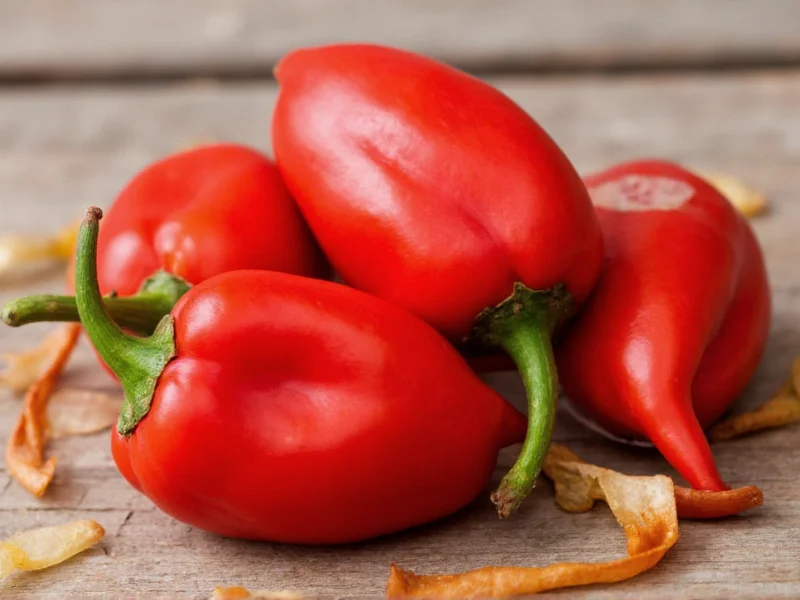Understanding the precise heat level of chipotle peppers helps home cooks and culinary professionals incorporate them effectively into recipes. While many assume smoked peppers automatically mean hotter peppers, the reality with chipotles is more nuanced.
What Exactly Is a Chipotle Pepper?
A chipotle pepper is not a distinct pepper variety but rather a smoked and dried ripe jalapeño. The name comes from the Náhuatl word “chilpoctli,” meaning “smoked chili.” This smoking process, traditionally done over oak wood, transforms the green jalapeño into a deep reddish-brown pepper with a distinctive smoky flavor profile while maintaining a similar heat range.
Chipotle Heat Range Explained
The Scoville scale measures capsaicin concentration, the compound responsible for chili pepper heat. Chipotle peppers maintain the same fundamental heat range as their fresh jalapeño counterparts:
- Minimum heat: Approximately 2,500 SHU
- Average heat: Around 5,000-6,000 SHU
- Maximum heat: Up to 8,000 SHU in particularly potent specimens
This places chipotle peppers firmly in the medium heat category. For context, a typical bell pepper measures 0 SHU while a habanero ranges from 100,000 to 350,000 SHU.
Factors Influencing Chipotle Pepper Heat
Several elements affect how hot your chipotle peppers might be:
- Ripeness at harvest: Fully red-ripe jalapeños (which become chipotles) tend to be hotter than green ones
- Growing conditions: Soil composition, climate, and water stress impact capsaicin production
- Individual variation: Like all peppers, heat can vary significantly between plants and even between peppers on the same plant
- Preparation method: Adobo sauce preparation can slightly mellow the perceived heat
| Pepper Type | Scoville Heat Units | Heat Comparison |
|---|---|---|
| Chipotle Pepper | 2,500-8,000 SHU | 1-2x hotter than poblanos |
| Fresh Jalapeño | 2,500-8,000 SHU | Same heat as chipotle |
| Serrano Pepper | 10,000-23,000 SHU | 2-3x hotter than chipotle |
| Habanero Pepper | 100,000-350,000 SHU | 15-40x hotter than chipotle |
Practical Implications for Cooking
When working with chipotle peppers, consider these practical tips for managing their heat level:
- Remove seeds and white membranes for milder flavor, as these contain the highest concentration of capsaicin
- Soak dried chipotles in warm liquid before use to rehydrate and slightly reduce intensity
- Start with small amounts in recipes—you can always add more heat but cannot remove it
- Balance heat with dairy products (yogurt, sour cream) or acidic components (lime juice)
- Remember that cooking concentrates flavors, including heat, so adjust accordingly
Chipotle in Adobo Sauce: Does It Change the Heat?
Many consumers encounter chipotle peppers preserved in adobo sauce. This tomato-based sauce with vinegar, garlic, and spices slightly mellows the perceived heat through several mechanisms:
- The vinegar content helps break down some capsaicin molecules
- Tomato solids absorb some of the heat compounds
- Additional flavors create a more complex profile that masks some heat perception
However, the fundamental Scoville rating remains unchanged—the heat is still present but distributed differently in the sauce medium.
Measuring Pepper Heat Accurately
Modern laboratories use High-Performance Liquid Chromatography (HPLC) to precisely measure capsaicinoids rather than the original Scoville organoleptic test, which relied on human tasters. This scientific approach provides more consistent measurements across different pepper varieties and growing conditions.
Common Misconceptions About Chipotle Heat
Several myths persist about chipotle pepper heat:
- Myth: Smoking peppers automatically makes them hotter
Reality: Smoking preserves but doesn't increase heat; some capsaicin may even degrade during smoking - Myth: All chipotles have identical heat levels
Reality: Significant variation exists between batches and brands - Myth: Darker chipotles are always hotter
Reality: Color relates more to smoking duration than heat level











 浙公网安备
33010002000092号
浙公网安备
33010002000092号 浙B2-20120091-4
浙B2-20120091-4